If you are considering a purchase of a used farm tractor or other machine, even if you are not using it to do traditional farm work, safety must be a prime consideration. Machines like tractors are one of the reasons farming remains the most hazardous industry in the U.S., with a death rate that’s seven times all other industries combined, and several hundred thousand people being seriously injured while working on and around farming equipment. Many serious injuries and deaths also occur on properties that would often not be considered as farms — like residential properties with big lawns, properties with a few horses or other animals, and/or wooded acreage.
Here are some critical priority checkpoints to protect the personal safety of yourself, family members, workers and others who might be using the equipment that you purchase.
Operator’s Manual

Make sure you get a copy of a correct operator’s manual for any equipment you purchase. Pay attention to the specifics to make sure the manual matches the make and model of the equipment you are purchasing. It’s a good sign when a seller who has the original operator’s manual for a piece of equipment they are selling and often means that routine maintenance was done and that the equipment has been cared for. This should be confirmed by visual inspection and other key indicators (condition of oil, signs of wear, tire tread, etc.). Most operator’s manuals have several pages at the beginning with safety instructions and other guidance located throughout. Pay attention to and make sure you understand the information in the manual. If in doubt, check with a local dealer or other experienced expert. Carefully review the manual and other safety information with all who will be operating the machine.
ROPS and Seatbelt
The one type of incident that makes farming the nation’s most dangerous occupation is tractor rollovers or overturns. Tractors can overturn either to the side, especially when operating on any type of slope or when turning too quickly at higher speeds. Tractors can also overturn backward due to the torque involved during certain jobs or when a load is attached to a point above the drawbar. In both scenarios, overturns happen fast, and often the operator is crushed under several tons of tractor weight. These events are almost always fatal, and several hundred tractor operators die each year due to rollovers and overturns.
Starting in the 1960s, tractor manufacturers began to offer rollover protective structures or ROPS for tractors. This is essentially a rollbar but may be a two-post ROPS, a four-post ROPS, or the protective structure may be designed as a built-in part of the cab. In all cases, a true ROPS must meet stringent engineering design standards and will have a nameplate or other indicator indicating that the ROPS is designed according to engineering design standards. A ROPS is designed to limit overturns to 90 degrees, or if the tractor rolls completely, to protect the operator within the space that the ROPS provides. For ROPS to be effective, the operator must be belted in so that they are not crushed by the tractor or the ROPS itself. So, you should look for a tractor with a ROPS as well as a functioning seatbelt.
Often, people will encounter used tractors not equipped with a ROPS. This is common on almost all used machines manufactured prior to 1985. On some of these tractors, retrofit ROPS kits can be purchased and installed by a qualified dealer or service shop. Additionally, check to see if you can get a ROPS “rebate” for installing rollover protection. On tractors manufactured in the 1930s, 40s and 50s, it is likely that a ROPS retrofit will NOT be available. In those cases, you should carefully consider whether that tractor will fit your operation. Row crop tractors that have a high center of gravity tend to tip sideways more easily. Also, narrow front end tractors tend to be less stable and more dangerous. A tractor equipped with a front-end loader often will tip more easily when a load is being carried in a position that raises the tractor’s center of gravity. Additionally, if those on your farm or other property who will be operating lack experience, are young or older (with limits due to reaction time), you may wish to avoid a non-ROPS tractor and look for something that’s a little newer with a ROPS or one that can be retrofitted.
Guards and Shields
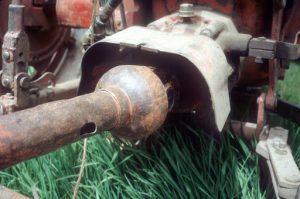
When purchasing any machine, including a tractor, inspect and ask for information about guards and shields. Shielding on rotating shafts, belts, gears and other moving parts is vital for protecting operator safety. A shield may seem like a simple piece of sheet metal or plastic, but finding and replacing a missing shield on a machine that is 20 or 30 or more years old can be very expensive. Often, the seller will have a missing shield out in a nearby machine shed or other location. Pay particular attention to the “master shield” that covers the tractor’s PTO and the U-joint on an implement when attached. This tends to be a common location of entanglement and serious injury or death.
Operator Controls
For safety and operational reasons, check the operation, location and condition of all control levers, switches and other devices that control functions like the PTO, transmission, throttle, hydraulics, three-point hitch, and lights/flashers. On older equipment, the position and location may not have been designed with safety or optimal usability in mind. Make sure that your height and length of arms and legs as well as other physical abilities allow for easy reach and operation of all controls, and that the controls do what they are intended to do. Have the seller demonstrate full functionality. If you are operating newer equipment, make sure you understand the controls that may not be easily understood — like the steering system on a skid-steer loader or a “joy-stick” control becoming more common on newer equipment.
Operator’s Station
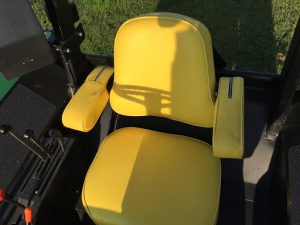
For safety reasons, consider the comfort and access to the operator’s station. On tractors, make sure the seat is in good condition and check for broken springs and other things that might be uncomfortable and increase fatigue. Tractors with a newer cab will likely have a blower and a heater — some will also have air conditioning. Inspect the air filter and run the blower in all modes; this will help when you are operating on hot, cold, or dusty days and will help protect your health. Also, operate a cabbed tractor at full power with the doors and windows closed. The cab should seal well and should not vibrate or make excessive noise. In older cabs that were field installed “after the fact,” the noise can be as much or more than operating without a cab and you may need hearing protection.
Finally, while it does not seem like a big deal, many injuries on used equipment including tractors occur while a person is getting on or off the machine. Sprains and broken bones are common along with head injuries if the operator topples onto concrete or another hard surface. Check the condition of steps, ladders and other devices used to get on and off the machine. The distance between steps should be roughly the same, and the distance between the bottom step and the ground within comfortable reach. Steps and ladders should be accompanied by handholds or other surfaces you can use to support and steady yourself while getting on and off. This is especially important for older operators as we begin to lose our sense of balance and can fall more easily as we get older.
Other Considerations
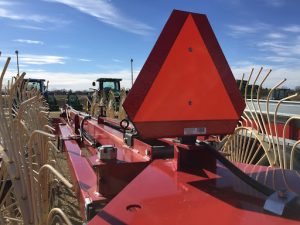
It is impossible to cover all aspects of safety in a short document like this. We urge you to learn more about the particular piece of equipment you may be considering for purchase. The operator manual is a great place to start. Also check with other credible sources. The National Agricultural Safety Database (NASD) has a wealth of information (https://nasdonline.org/browse.php).
Other items and areas to consider:
- Lights, reflectors and slow moving vehicle emblem — anytime equipment is going to be operated on a roadway it must have lighting and marking for safety and to meet legal requirements.
- Overall condition (engine, coolant, oil, hydraulic hoses, fuel tank, hitching components, tires and rims, etc.)
- Brake operation including braking needs for field operation, stopping, and parking
- Fire extinguisher(s)
- Wear on the clutch and brake pedals
- Second seats for training hired workers
- Guards and covers on engine area components including by-pass starting guards and battery covers

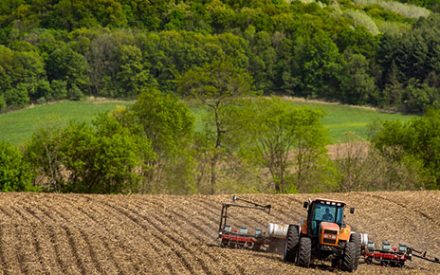 Used tractors and machinery make work easier on farms and large properties
Used tractors and machinery make work easier on farms and large properties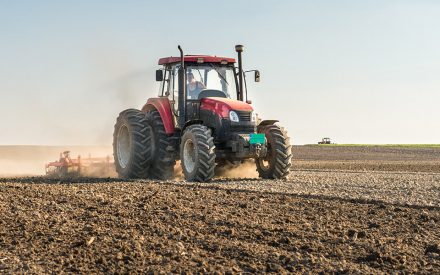 Farm machinery pre-purchase considerations: needs and economics
Farm machinery pre-purchase considerations: needs and economics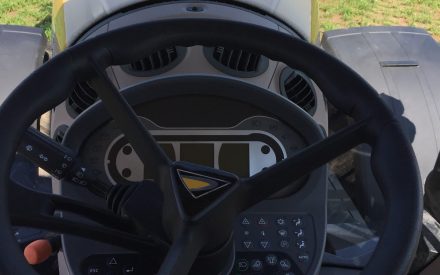 Tractor pre-purchase considerations: know your needs
Tractor pre-purchase considerations: know your needs


